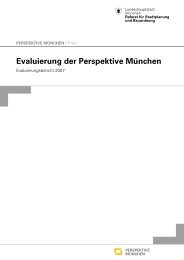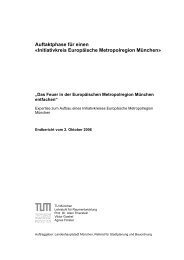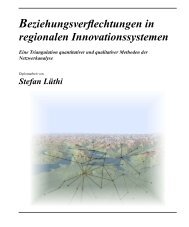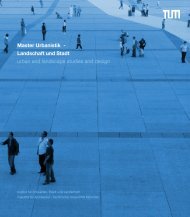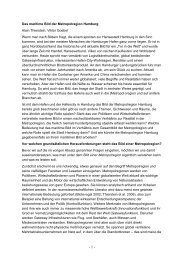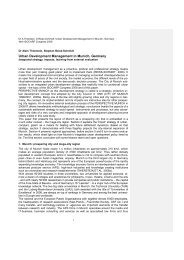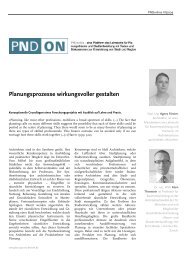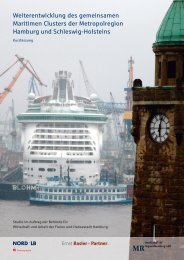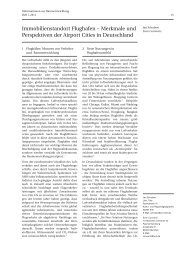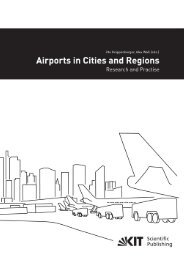0.6-1-Cover and Table of Contents-pp 0-05.indd - Raumentwicklung ...
0.6-1-Cover and Table of Contents-pp 0-05.indd - Raumentwicklung ...
0.6-1-Cover and Table of Contents-pp 0-05.indd - Raumentwicklung ...
You also want an ePaper? Increase the reach of your titles
YUMPU automatically turns print PDFs into web optimized ePapers that Google loves.
MAHMOUD REZA SAGHAFI, JILL FRANZ, AND PHILIP CROWTHER<br />
Perceptions <strong>of</strong> Physical versus Virtual Design Studio Education<br />
space that has 24 hours access for the students<br />
<strong>and</strong> to encourage them to work there whenever<br />
they wanted to, thus extending their o<strong>pp</strong>ortunity<br />
to work together <strong>and</strong> learn from each other. For<br />
design studio units, four hours per week seems<br />
insufficient especially when staff-student ratios<br />
are high. The web-based design studio can be<br />
considered as a part <strong>of</strong> this variety providing<br />
wider range for the students who are interest to<br />
communicate with different people about certain<br />
ideas or concepts through different time <strong>and</strong><br />
space. So, a wide variety <strong>of</strong> spaces (<strong>and</strong> times)<br />
may accommodate a variety <strong>of</strong> personalities<br />
<strong>and</strong> a<strong>pp</strong>roaches.<br />
In terms <strong>of</strong> technology, what emerged was the<br />
need for platforms to be a<strong>pp</strong>ropriate for the<br />
information they are delivering or the interaction<br />
they are su<strong>pp</strong>orting. Student satisfaction<br />
depends on providing easy navigation as well<br />
as experienced tutors who know how to use<br />
the technology. Levine <strong>and</strong> Wake (2000: 6)<br />
encourage the students to bring the virtual into<br />
the physical in order to improve design ideas <strong>and</strong><br />
exploit its unique characters. Digital platforms<br />
can assist to deliver explicit knowledge whilst<br />
tutoring needs to be face-to-face in an ongoing<br />
constructive mode.<br />
Pedagogically, whereas PDS is considered more<br />
convenient for communication <strong>and</strong> interaction,<br />
VDS is better suited to independent learning <strong>and</strong><br />
improvement. In a BDS both aspects can be<br />
brought together. The tutor’s teaching style <strong>and</strong><br />
role will move from focusing on interaction in PDS<br />
to emphasising on student-centred a<strong>pp</strong>roach in<br />
VDS alternately. Sessions which focus on improving<br />
skills <strong>and</strong> production should be achieved in PDS,<br />
while VDS should be considered for processes<br />
such as developing knowledge <strong>and</strong> research.<br />
VDS can provide both internal <strong>and</strong> international<br />
collaboration beyond an a<strong>pp</strong>ropriate curriculum<br />
emphasis on team-working. Internal collaboration<br />
can be enhanced through group work in the<br />
studios with the possibility <strong>of</strong> the virtual networking<br />
encouraging more effective collaboration for<br />
those feeling uncomfortable in the physical<br />
design studio. Zupancic (2007: 653) concludes<br />
that VDS derive from virtual culture, which forms<br />
new socio-spatial identity in virtual environment.<br />
Therefore, accreditation <strong>of</strong> different VDS depends<br />
on their cultural contexts.<br />
Since both PDS <strong>and</strong> VDS assessment modes are<br />
considered as a<strong>pp</strong>ropriate for final presentation,<br />
BDS can combine digital displaying in the physical<br />
exhibition style to capitalise on both advantages.<br />
In this case, students’ works can pin up on the<br />
panels in an a<strong>pp</strong>ropriate size, while they are<br />
presented digitally on a screen to provide for<br />
clarity <strong>and</strong> ease <strong>of</strong> communication during the<br />
presentation.<br />
Internet-based instruction materials generally<br />
including visual information rather than audio <strong>and</strong><br />
text, so implicit knowledge can be conveyed more<br />
effectively because <strong>of</strong> the integration <strong>of</strong> multiple<br />
senses by the variety <strong>of</strong> formats such as video <strong>and</strong><br />
computer animation (Bender <strong>and</strong> Vredevoogd,<br />
2006: 119). This potential can increase students’<br />
motivation <strong>and</strong> creativity. Course description<br />
<strong>and</strong> syllabi can be distributed over the Internet<br />
through online resources minimizing excessive<br />
copying or the need to place reading materials in<br />
the library. BDS can allow for design books in PDS<br />
<strong>and</strong> online resources in VDS.<br />
In the same way, creating, developing, <strong>and</strong><br />
reflecting during the design process can be<br />
better matched with BDS by choosing the proper<br />
Archnet-IJAR, International Journal <strong>of</strong> Architectural Research - Volume 6 - Issue 1 - March 2012<br />
17



